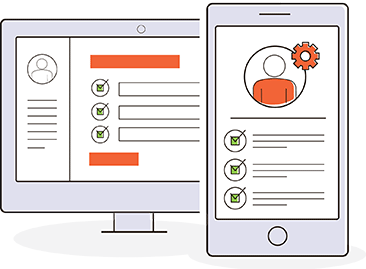Order Fulfillment Process Design and Optimization

Creating a successful order fulfillment process requires accounting for issues that can inevitably crop up. For example, if a customer orders something and has a less-than-ideal experience, that could adversely affect their desire to do future business with your company. For that reason, organizations must develop a way to create a consistent, efficient e-commerce order fulfillment process.
What is Order Fulfillment?
Order fulfillment involves the entire process of delivering orders to customers, from when they submit their purchase to when the package arrives on their doorstep. When it comes to e-commerce order fulfillment, there’s typically a third party involved in completing the order.
In addition, order fulfillment must account for instances where the customer decides to return a product. That means your order fulfillment process must have a way to manage return transactions efficiently. So, your understanding of order fulfillment meaning should include the potential that a customer may not be happy with what they receive.
Typical steps in the order fulfillment process include:
- Getting inventory shipments
- Storing inventory
- Retrieving inventory
- Processing orders
- Packing orders
- Shipping orders
- Delivering orders
- Processing returns
An order is considered fulfilled once a customer receives it. However, a lot can go wrong from the point of sale. Therefore, organizations must have process automation software capable of helping them map out the essential details of order fulfillment.
What Are Common Challenges in Order Fulfillment?
Most issues that crop up during the order fulfillment process relate to inventory management and problems with the structure of a company’s business processes. Below are issues with the potential to disrupt the order fulfillment process.
Incorrectly filled orders
If someone within your company doesn’t fill an order correctly, that can lead to an upset vendor or customer. For example, someone may input an incorrect SKU number and ship the wrong product. Other issues might include a worker inadvertently placing the wrong item in a package waiting for shipment.
Lack of stock
A lack of stock, a stockout, can also lead to order fulfillment issues. If a customer places an order and the purchase goes through, they expect to receive the product they ordered. They won't be very happy to receive a notification from your company stating you don’t have enough product to meet demand.
Packing delays
Once you get an order in, it takes time to retrieve an item from your inventory and get it packaged for shipping. If a worker has trouble locating an item or your packing process lacks efficiency, that will lead to delays in getting the package out to your customers.
Overseas shipping
Having to send a package overseas can complicate the shipping process. Depending on a package’s destination, a customer can take much longer to receive their order. In addition, there are additional costs to account for, including customs fees. It isn’t just that; you still need a process to handle international returns, including how to process returns at different exchange rates or send a replacement item.
Communication breakdowns
Getting orders fulfilled correctly requires good communication between all parties involved in the workflow. For example, suppliers need to let you know whether they have specific items in stock. In addition, you need to communicate with customers when they come to you with concerns. Finally, you need a way for workers within your company to talk to one another to ensure no issues arise that delay order fulfillment.
How Can You Create an Optimal Order Fulfillment Process?

Before you can create an optimal e-commerce order fulfillment strategy, you must think about certain factors. That way, you can leave room to scale up your operations as needed as your business grows.
1. Company size and order volume
How many orders does your company take in each month, and how many can you ship out within a month? In addition, you need to figure out how many orders you expect to receive and ship out over the coming months and even next year.
The number of products you sell and ship each month will play a key role in determining which order fulfillment system works best for your organization. However, keep in mind that there’s no one-size-fits-all solution that applies to every company. Therefore, you must do the legwork to understand your current operations. That way, you can figure out how to develop an optimal order fulfillment solution.
2. Sales channels and current technology
What channels does your company use to promote and sell your products? Are you using a specific e-commerce platform, promoting orders through a business website, or an online marketplace? Many companies combine these approaches to reach the widest audience possible.
With the right order fulfillment software, you can integrate with your existing platforms to better track the order fulfillment process. Ideally, the solution you choose simplifies your order fulfillment process vs. adding additional complications.
3. Customer location
Look at where you’re getting most of your orders. Are they primarily domestic, or do you have a sizeable international customer base? That should factor into your choice of fulfillment software. You want to ensure you have a way to get orders to customers fast enough to meet their expectations. Even domestic deliveries can bring certain challenges. For example, if you’re trying to get a package to a rural area, there may be higher shipping costs versus shipping to urban locations.
Order Fulfillment Best Practices
Once you develop a fulfillment model that fits your business, look for an adaptable platform to accommodate your strategy. The workflow software should use data in a way that helps you create real-time predictions to help you assess your inventory needs and make better demand predictions.
Automation can go a long way to making your order fulfillment process more efficient. That way, you can meet your customers' needs while reducing manual labor for your employees. The Integrify platform is flexible enough to fit a wide array of order fulfillment strategies.
Learn more about how our software works by setting up a demo.

